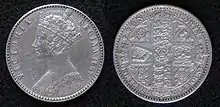盾
| ||||||||
Translingual
Han character
盾 (Kangxi radical 109, 目+4, 9 strokes, cangjie input 竹十月山 (HJBU), four-corner 72264, composition ⿸𠂆𥃭 or ⿸𣂑目)
Derived characters
- 循 楯
References
- KangXi: page 801, character 19
- Dai Kanwa Jiten: character 23171
- Dae Jaweon: page 1218, character 3
- Hanyu Da Zidian (first edition): volume 4, page 2475, character 5
- Unihan data for U+76FE
Chinese
| simp. and trad. | 盾 | |
|---|---|---|
Glyph origin
| Historical forms of the character 盾 | ||
|---|---|---|
| Shang | Western Zhou | Shuowen Jiezi (compiled in Han) |
| Oracle bone script | Bronze inscriptions | Small seal script |
 |  |  |
Characters in the same phonetic series (盾) (Zhengzhang, 2003)
| Old Chinese | |
|---|---|
| 盾 | *l'uːnʔ, *ɦljunʔ |
| 遁 | *l'uːnʔ, *l'uːns |
| 循 | *ljun |
| 揗 | *ljun, *ɦljunʔ, *ɦljuns |
| 楯 | *ljun, *l̥ʰun, *ɦljunʔ |
| 輴 | *l̥ʰun |
| 腯 | *l'uːd |
| 鍎 | *l'uːd |
Pictogram (象形) — a shield (in the oracle bone script). Note that under the 𠂆 is not 直 - one less stroke here.
Etymology
- “shield”
- Compare Burmese လွှား (hlwa:, “oblong shield”) (Starostin). It is unclear whether Chepang [script needed] (dhəl) is related (Schuessler, 2007). This etymology is incomplete. You can help Wiktionary by elaborating on the origins of this term.
- “dong”
- Borrowed from Vietnamese đồng, from Chinese 銅 (MC duŋ, “copper”).

1849 “godless florin”
- “guilder; gulden; rupiah”
- Probably first referred to the two shilling coin, also known as the florin, which had four crowned cruciform shields with a rose in the centre. It was later used for the Dutch guilder, which replaced an older currency known as the florin. Since the guilder was used in Indonesia, when the rupiah replaced it, the Chinese name for the guilder continued to be used for the rupiah.
Pronunciation
Definitions
盾
- (military) shield
- shield-shaped object
- (figurative) support; aid; assistance
- dong (Vietnamese currency)
- guilder; gulden (several currencies)
- rupiah (Indonesian currency)
Compounds
|
|
|
References
- “盾”, in 漢語多功能字庫 (Multi-function Chinese Character Database), 香港中文大學 (the Chinese University of Hong Kong), 2014–
Japanese
Alternative forms
- 楯
Kanji
盾
(common “Jōyō” kanji)
- shield, escutcheon
Readings
- Go-on: じゅん (jun, Jōyō); どん (don)
- Kan-on: しゅん (shun); とん (ton)
- Kun: たて (tate, 盾, Jōyō)
Etymology
| Kanji in this term |
|---|
| 盾 |
| たて Grade: S |
| kun’yomi |
The nominalized form of the verb 立てる (tateru, “stand”).
Noun
盾 • (tate)
- a weapon stood up or erected before one's body to block and protect from attacks; a shield
Korean
Etymology
From Middle Chinese 盾 (MC ʑiuɪnX).
| Historical readings |
|---|
|
Pronunciation
- (SK Standard/Seoul) IPA(key): [sʰun]
- Phonetic hangul: [순]
Hanja
Wikisource盾 (eumhun 방패 순 (bangpae sun))
- Hanja form? of 순 (“shield”).
Compounds
Compounds
- 모순 (矛盾, mosun)
References
- 국제퇴계학회 대구경북지부 (國際退溪學會 大邱慶北支部) (2007). Digital Hanja Dictionary, 전자사전/電子字典.
Vietnamese
Han character
盾: Hán Nôm readings: thuẫn
- This term needs a translation to English. Please help out and add a translation, then remove the text
{{rfdef}}.